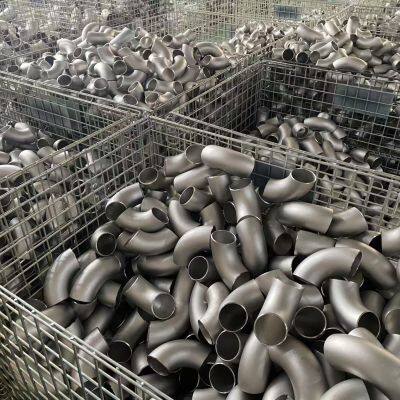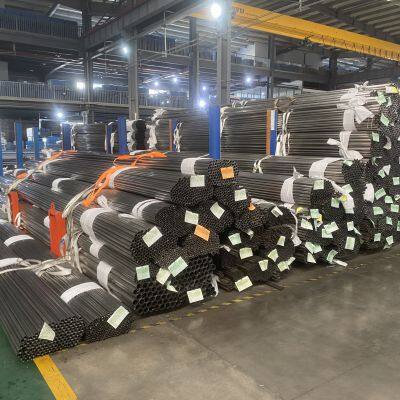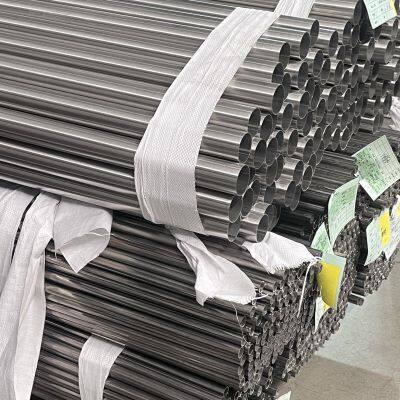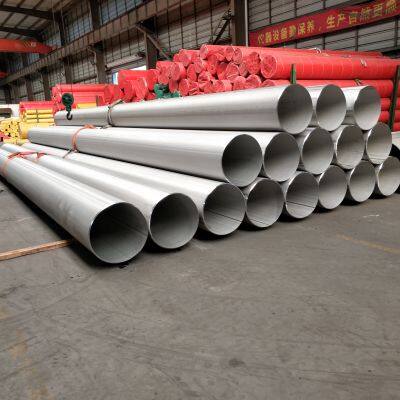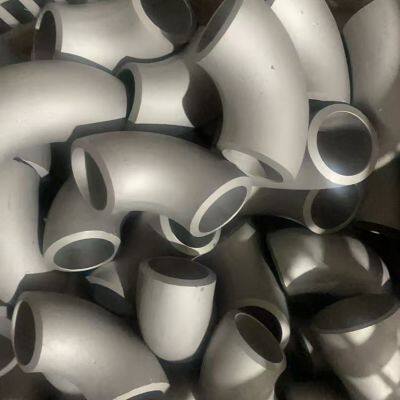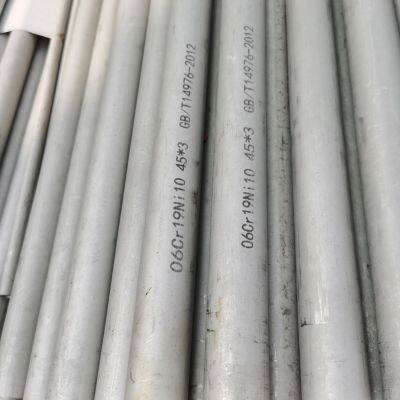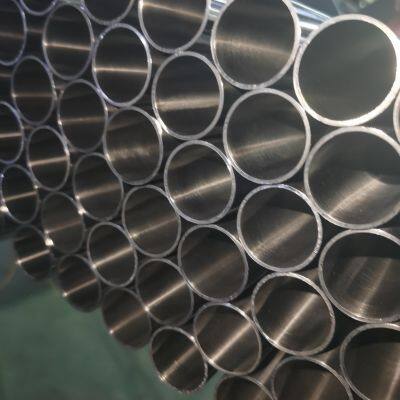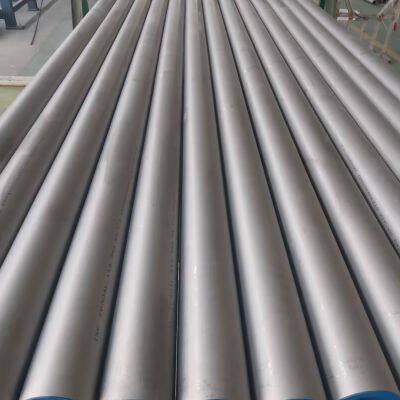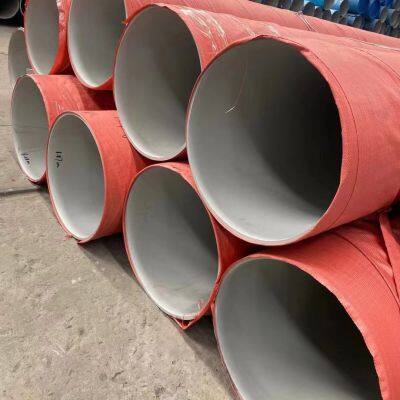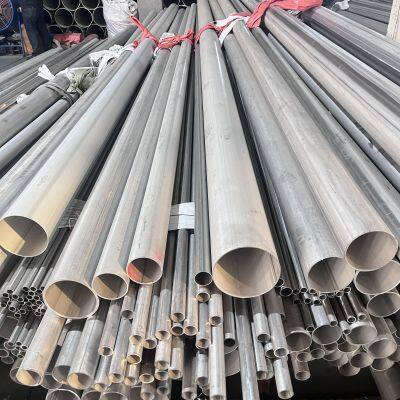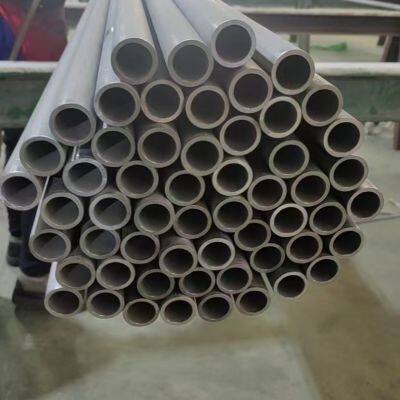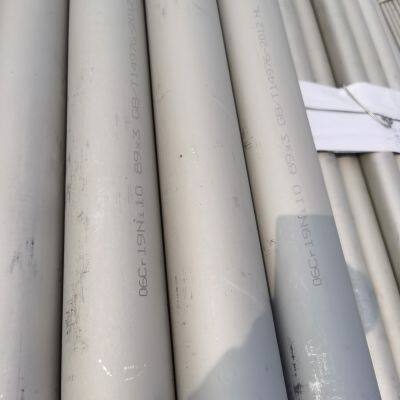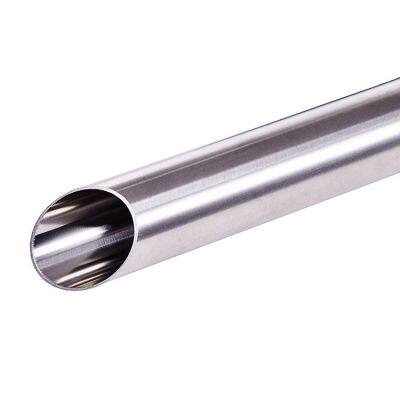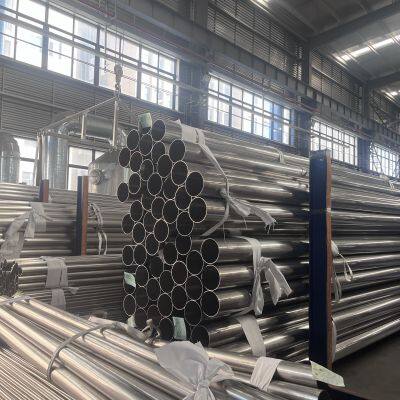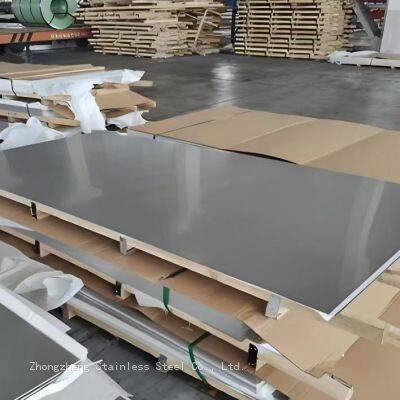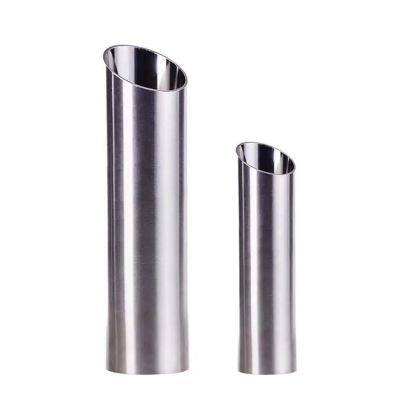Please provide a detailed introduction to the surface treatment process of sanitary grade stainless
The surface treatment process of sanitary grade stainless steel pipes is the core technology to ensure their high cleanliness, corrosion resistance, and pollution prevention capabilities. Its process design directly affects the applicability of the pipes in industries such as pharmaceuticals, healthcare, and food. Below is a detailed analysis from the dimensions of process classification, processing flow, technical characteristics, quality standards, etc.:
1、 Core Objectives and Classification of Surface Treatment Processes
1. Core objectives
Reduce surface roughness (Ra value): Reduce residual media and microbial attachment sites, ideally Ra ≤ 0.2 μ m.
Formation of passivation film: enhances corrosion resistance and prevents the leaching of metal ions (such as Fe ³ ⁺).
Eliminate surface defects such as weld beads, scratches, oxide scales, etc., to avoid the accumulation of dirt and grime.
2、 Detailed explanation of core surface treatment process
1. Mechanical Polishing (MP)
Process flow
Rough polishing: Use a grinding wheel (80-120 mesh) to remove welding spatter and oxide scale, and preliminarily level the surface.
Intermediate polishing: Further polishing with sand belt (180-320 mesh) to eliminate rough polishing marks, reducing the Ra value to below 1.6 μ m.
Fine polishing: Wool wheel+polishing paste (600-1000 mesh) finely ground, Ra can reach 0.8 μ m.
FEATURES
Advantages: Low equipment cost, suitable for batch processing of non critical weld areas; Can correct macroscopic defects on the surface of pipes.
Limitations: It belongs to physical polishing and may cause surface hardening (lattice distortion), and it is difficult to handle complex geometric structures (such as the inside of bends); The residue of polishing paste needs to be thoroughly cleaned, otherwise it may introduce organic contamination.
Application scenarios
Non sterile filling lines and ordinary purified water pipelines in the food and beverage industry (with a cleanliness requirement of ≤ Ra0.8 μ m).
2. Electro Polishing (EP)
Processing principle
Using the principle of electrochemical dissolution: using the pipe as the anode, immerse it in an electrolyte (such as a mixture of phosphoric acid, sulfuric acid, and chromic acid), and use an electric current to preferentially dissolve the micro protrusions on the surface, achieving a leveling effect.
Process flow
1. Pre treatment: degreasing (alkaline cleaning) → acid washing (nitric acid+hydrofluoric acid to remove oxide scale).
2. Electrolytic polishing:
Voltage: 8-20V, Temperature: 50-80 ℃, Time: 5-15 minutes.
Electrolyte composition control: The proportion of phosphoric acid is 60-70%, which determines the polishing rate; Sulfuric acid adjusts viscosity, while chromic acid enhances brightness.
3. Post treatment: Rinse with deionized water → neutralize (sodium carbonate solution) → dry.
Technical parameters and advantages
Surface effect: Ra can reach 0.2-0.5 μ m, and a uniform passivation film is formed on the surface (Cr ₂ O3 content is 30% higher than mechanical polishing).
Unique advantages:
No mechanical stress: avoids surface hardening caused by traditional polishing, suitable for thin-walled pipes (wall thickness ≤ 2mm).
Good uniformity: The current distribution is uniform, and the inner walls of complex parts such as bends and tees can also be polished.
Self cleaning effect: Dissolved products overflow in the form of bubbles, reducing residual impurities.
Application Cases
A mRNA vaccine production line uses 316L stainless steel tubes treated with EP, and the surface microbial adhesion is reduced by more than 90% compared to mechanically polished tubes after testing.
3. Passivation treatment
Essence of craftsmanship
Dissolve surface free iron ions with chemical reagents (such as 60-70% nitric acid solution) to promote the formation of a dense Cr ₂ O Ⅲ passivation film (with a thickness of about 2-3nm) on the surface of stainless steel, enhancing its corrosion resistance.
Process flow (taking nitric acid passivation as an example)
1. Pre cleaning: Rinse with deionized water to remove surface oil stains and metal debris.
Passivation treatment:
Temperature: room temperature -50 ℃, time: 20-60 minutes.
Concentration control: Insufficient nitric acid concentration can lead to incomplete passivation film, while excessive concentration may corrode the substrate.
3. Neutralization and detection: Adjust the pH to neutral with ammonia water, and confirm the passivation effect through blue dot testing (detecting free iron).
key role
Repair oxide film: Passivation film damaged during mechanical polishing or welding can be regenerated through passivation treatment.
Reduce metal ion leaching: In an acidic solution with pH=3, the Fe ion leaching amount of passivated 316L pipes is less than 0.1ppm.
4. Electrochemical Polishing (ECP)
Difference from electrolytic polishing
Electrolyte optimization: Adding organic amine additives (such as ethylenediamine) to suppress hydrogen evolution and improve polishing accuracy.
More stringent process parameters: voltage control accuracy ± 0.5V, temperature fluctuation ≤ 2 ℃, and time accuracy to the second level.
Ultimate surface effect
Ra≤0.2μm, The surface reflectivity is over 85%, approaching the mirror effect; Suitable for pipelines that come into contact with highly active drugs (such as anti-tumor drugs) to avoid drug adsorption and deterioration.
3、 Quality inspection and standards after surface treatment
1. Roughness detection (Ra value)
Testing tool: Portable roughness meter (such as Mitutoyo SJ-210), measure 3-5 points along the axis of the pipe, and the average value should meet industry standards (such as FDA requirements for pipes that come into direct contact with drugs, Ra ≤ 0.5 μ m).
2. Corrosion resistance test
Salt spray test: 5% NaCl solution, 35 ℃ constant temperature spray for 240 hours, no rust on the surface (ISO 9227 standard).
Intergranular corrosion test: Soak in boiling sulfuric acid copper sulfate solution for 16 hours according to ASTM A262 standard, bend 180 ° without cracks.
3. Cleanliness verification
TOC (Total Organic Carbon) detection: residual polishing paste content ≤ 0.5ppm (pharmaceutical industry standard).
Microbial testing: Wipe the surface with a cotton swab, and the bacterial count after cultivation should be ≤ 10CFU/100cm ².
4、 Combination application of different processes and industry selection logic
1. Basic combination: mechanical polishing+passivation
Applicable scenarios: food and beverages, general medical consumables (such as external tubing for infusion tubes).
Cost advantage: 30-50% lower in cost than electrolytic polishing, but it is important to note that scratches from mechanical polishing may become blind spots for cleaning.
2. Standard combination: electrolytic polishing+passivation
Typical industries: Purified water systems in pharmaceutical factories, gas pipelines in hospital operating rooms.
Cost performance balance: Passivation after EP treatment can enhance the stability of the film layer and meet GMP requirements for "no dead corners cleaning".
3. High end combination: electrochemical polishing+passivation+coating
Special scenarios: bioreactors, gene therapy drug production lines.
Additional technology: In some scenarios, PTFE film will be coated after ECP to further reduce surface energy (contact angle>110 °) and prevent protein adsorption.
5、 The cutting-edge trend of surface treatment technology
Recently Posted
-
What are the differences between stainless steel pipes and copper pipes?
January 8, 2026Comparison of hygiene performance Stainless steel material is a type of material that can be implanted into the human body. I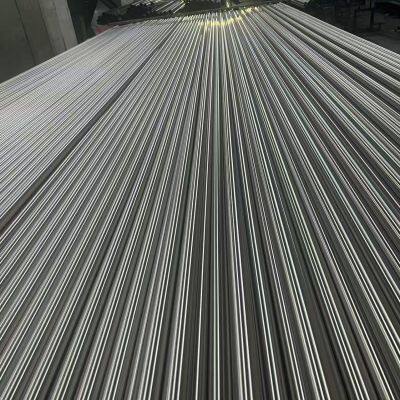 Read More
Read More -
What are the advantages of thin-walled stainless steel pipes
January 8, 2026Anti-fouling and corrosion-resistant One of the most obvious advantages of thin-walled stainless steel pipes is that they are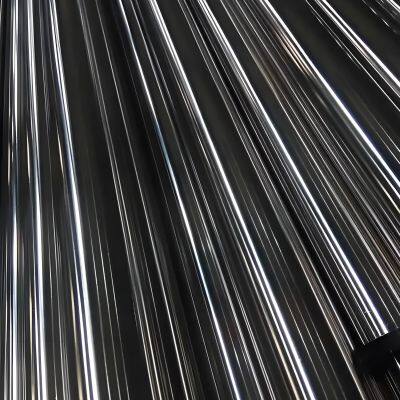 Read More
Read More -
The main factors influencing the selection of specifications for thin-walled stainless steel pipes
January 8, 2026The properties of the material Stainless steel is a kind of metal material with outstanding mechanical properties, exceptiona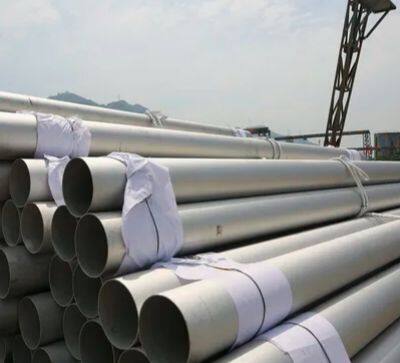 Read More
Read More -
How to detect weld defects in stainless steel pipes
January 8, 20261. Welding omission refers to the situation where there are welding points that are not properly welded during the welding process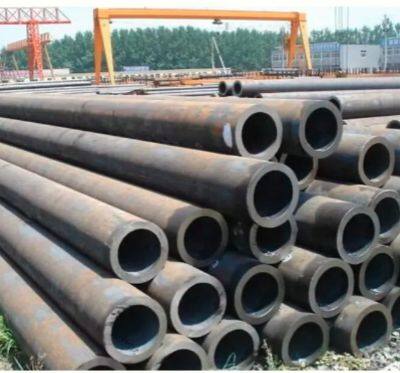 Read More
Read More



